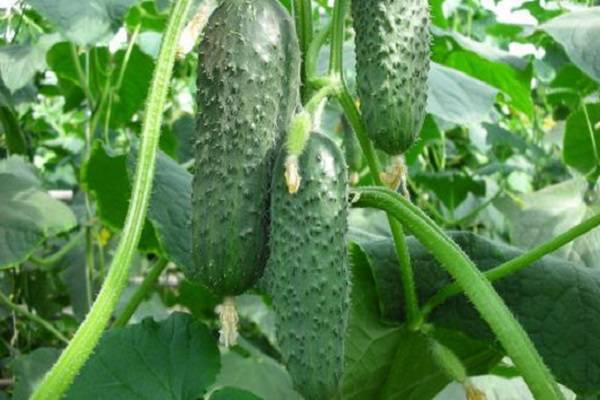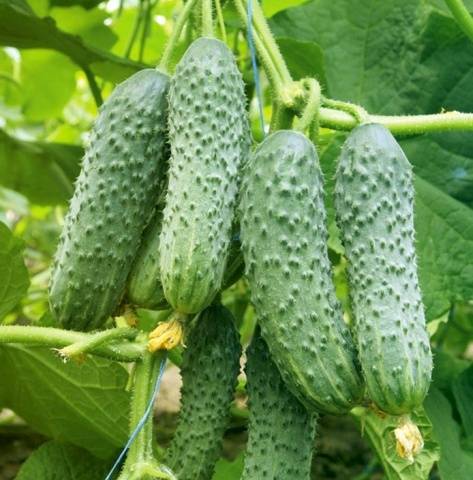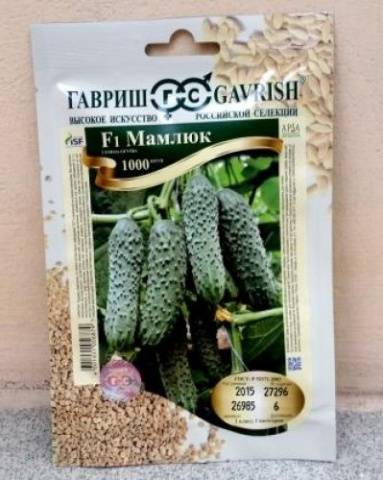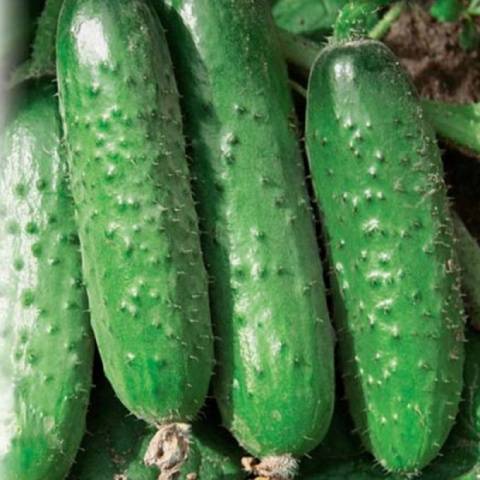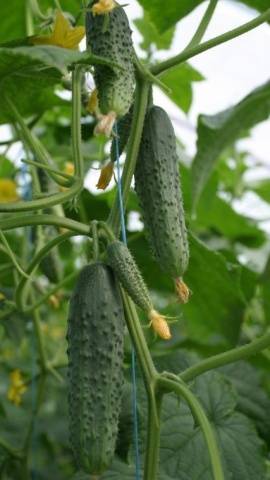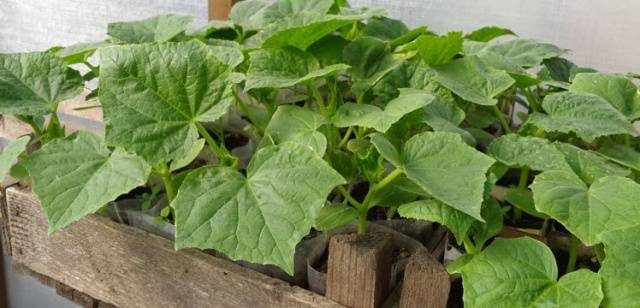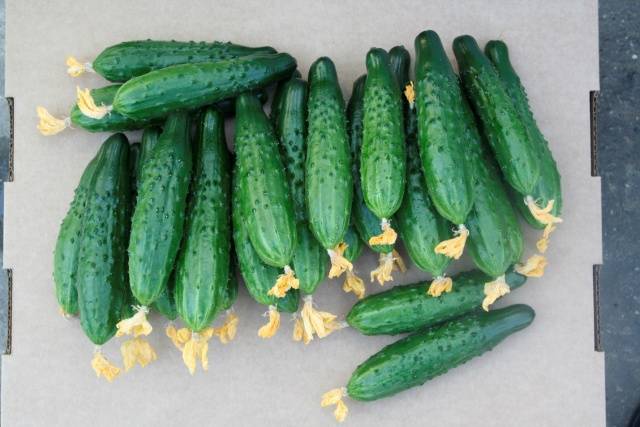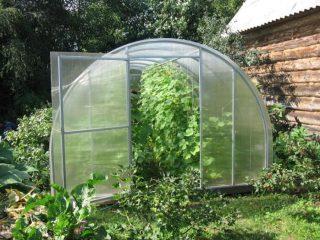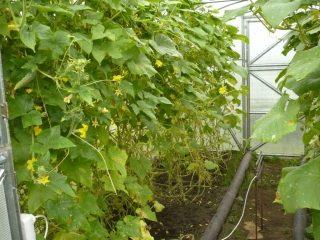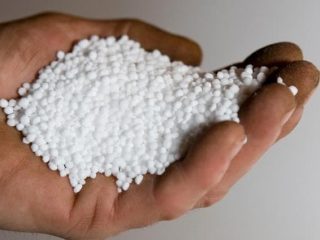Content
Every summer resident or owner of a personal plot tries to grow cucumbers, since it is difficult to imagine any summer salad without this refreshing vegetable. As for winter preparations, here too it has no equal in popularity. Cucumbers are tasty both salted and pickled, and in a variety of assorted vegetables. But cucumbers, to some extent deservedly, have gained the opinion that they are a rather capricious crop, demanding in terms of fertilizing, watering, and, of course, the amount of heat. Even in the southern regions, in order to get good harvests, they are often grown in greenhouses. And in most other regions of Russia, you can expect good returns from cucumbers only when planting plants in greenhouses or greenhouses.
Recently, with the advent of parthenocarpic hybrids, growing cucumbers in greenhouses has ceased to be a problem. After all, the fruits of such hybrids are formed without pollination at all, which means that there is no need for insects, of which there are not very many in greenhouses. The Mamluk cucumber is a typical representative of parthenocarpic hybrids, and even with a female type of flowering. All the characteristics in the description of the hybrid variety of Mamluk cucumber indicate its promise, therefore, despite its relative youth, this hybrid has every chance of gaining great popularity among gardeners and farmers.
Features of parthenocarpic hybrids
For some reason, many even experienced gardeners are confident that parthenocarpic and self-pollinating cucumbers can be safely equated. But this is not at all true, both in essence and in their fruit-setting characteristics. Self-pollinating cucumbers, and plants in general, have both a pistil and stamens on one flower, and it is capable of pollinating itself to produce an ovary. Moreover, bees and other insects that happen to fly by will also pollinate these cucumbers without any problems. And, of course, self-pollinating cucumbers produce seeds.
But parthenocarpic species do not require pollination at all to produce fruits. And often when planted in open ground and pollinated by insects, they grow ugly, bent fruits. Therefore, these cucumbers are specially designed for growth and development in greenhouses. During normal development, they do not form full-fledged seeds or the plants are completely devoid of seeds.
Parthenocarpic hybrids are especially appreciated by farmers who grow cucumbers on an industrial scale. Indeed, in addition to the fact that they do not require insects for the formation of fruits, they also have the following advantages over conventional bee-pollinated varieties of cucumbers:
- Good tolerance to most adverse weather conditions.
- Rapid growth of cucumbers.
- Easy tolerance to various kinds of diseases, and even immunity to some of them.
- When overripe they never turn yellow.
- They have a pleasant taste and high commercial quality.
- The ability for relatively long-term storage and the ability to transport them over long distances.
Description of the hybrid
The Mamluk f1 cucumber was obtained by specialists from the Research Institute of Vegetable Growing in Protected Soil, which works together with the breeding company Gavrish. In 2012, this hybrid was registered in the State Register of Breeding Achievements of Russia and is recommended for cultivation in closed ground conditions. The originator was the breeding company Gavrish, in the packaging of which Mamluk cucumber seeds can be found on sale.
Due to the excellent adaptability of this hybrid to low light conditions, Mamluk cucumber plants are well suited for growing not only in the summer-autumn, but also in the winter-spring period in heated greenhouses.
The hybrid can be classified as early ripening, since cucumbers begin to ripen within 35-37 days after planting the germinated seeds. Moreover, this ripening period is more typical for winter-spring plantings. And during the summer-autumn growing period, Mamluk cucumbers can ripen even after 30-32 days after emergence.
Therefore, the plants of this hybrid are distinguished by their tall growth, the main stem grows especially actively, while the degree of branching of the shoots is below average. Plants of this hybrid are usually classified as indeterminate; they have unlimited growth and require mandatory shaping.
The Mamluk cucumber is characterized by a female type of flowering; it produces only 1-2 ovaries in one node, so it does not require rationing of the ovaries. Of course, cucumbers with a bouquet type of ovary, when up to 10-15 fruits are formed in one node, have great yield potential. But on the other hand, such species are very demanding in terms of compliance with agricultural technology and, at the slightest unfavorable weather disaster, they easily shed their ovaries, which is not observed in the Mamluk hybrid. In addition, it is characterized by uniform filling of cucumbers, so the yield of marketable products is higher.
In terms of productivity, this hybrid is capable of overtaking even such famous cucumber hybrids like Herman or Courage. At least, during testing, he was able to demonstrate marketable yields reaching 13.7 kg per square meter of planting.
In film and polycarbonate greenhouses, quite specific conditions arise that dictate the selection of hybrids that are stable and unpretentious in cultivation.
Mamluk cucumber is characterized by resistance to olive spot, powdery mildew and various root rots. The hybrid is also quite tolerant to ascochyta blight and downy mildew. Among cucumber diseases for which there is no genetic resistance, green mottled mosaic virus can be noted. Nevertheless, according to the official observations of the originator, for at least two years, the Mamluk cucumber hybrid has been affected by this virus to a lesser extent than other hybrids.
Fruit characteristics
Tuberous short-fruited cucumbers are the most in demand on the market, especially in summer and autumn. Since they are equally good for consumption both fresh and for various preparations.
Hybrid Mamluk cucumbers are the most typical representatives of this variety.
- The fruits are dark green with small light stripes.
- The shape of cucumbers is smooth, cylindrical with a slight slope.
- The tubercles are medium-sized or larger, evenly distributed over the surface of the fruit. The spikes are white. There are practically no seeds.
- On average, the length of cucumbers reaches 14-16 cm, the weight of one fruit is 130-155 grams.
- The taste of cucumbers is excellent; they lack bitterness at the genetic level.
- The use of cucumbers is universal - you can crunch them to your heart's content, picking them straight from the garden, use them in salads, and also in a variety of preparations for the winter.
- The fruits of the Mamluk cucumber are well stored and can withstand transportation over long distances.
Features of cultivation
The technology for growing Mamluk f1 cucumbers in open or closed ground conditions in summer and autumn differs little from conventional varieties. Seeds are sown in the ground no earlier than the soil warms up to +10°+12°C.
The average sowing depth is about 3-4 cm. The most optimal layout for cucumber plants is 50x50 cm with a mandatory garter to the trellis.
The agricultural technology for growing Mamluk cucumbers in winter-spring in heated greenhouses has the following features. The seeds of this cucumber hybrid can be sown for seedlings as early as December - January, so that in February you can already plant 30-day-old seedlings in the greenhouse soil. To germinate, seeds need a temperature of about +27°C.After the sprouts appear, the temperature can be reduced to +23°+24°C, and additional round-the-clock illumination is used for the first 2-3 days.
In this case, it is desirable to maintain the relative air humidity at a level of 70-75%.
Mamluk cucumber plants are planted in a permanent place every 40-50 cm, tying them to a vertical trellis.
Despite the fact that a small number of ovaries are formed in the nodes of this hybrid, the method of forming plants into one trunk is also suitable for it. In this case, the four lower leaves with ovaries are completely removed, and at the next 15-16 nodes, one ovary and one leaf are left. In the upper part of the bush, where the cucumber grows higher than the trellis, 2-3 leaves and ovaries are left at each node.
When cucumbers begin to bear fruit, the temperature on a sunny day should not be less than +24°+26°C, and at night +18°+20°C.
Watering cucumbers should be regular and quite abundant. At least 2-3 liters of warm water should be consumed per square meter of planting.
Reviews from gardeners
The excellent characteristics of the Mamluk cucumber were appreciated, first of all, by professional agricultural producers and farmers. But even for ordinary summer residents, the Mamluk cucumber hybrid seemed interesting, although not everyone is able to achieve maximum results in its cultivation.
Conclusion
The Mamluk cucumber can show the best results when grown in closed ground conditions, but you can also get a good harvest from it in open beds.
